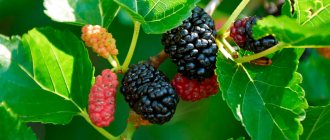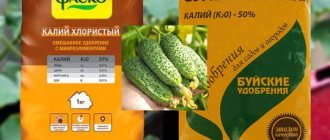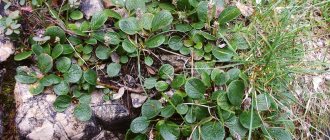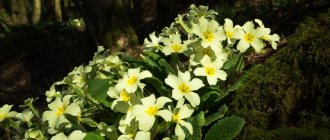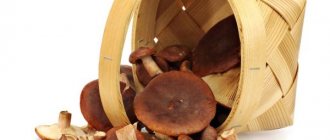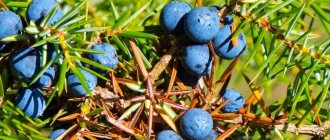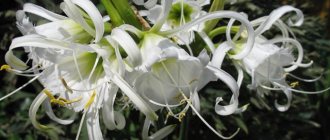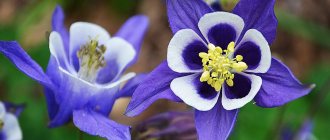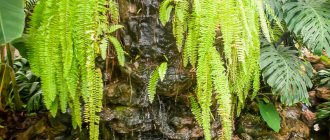In our article you will find information about the appearance of eucalyptus, and also find out in what areas of life an ordinary person can use it.
Our planet is home to a huge number of different trees that have quite impressive sizes. But, perhaps, eucalyptus stands out most of all from the rest. The main feature of this tree is that with a very large crown it provides virtually no shade.
This is due to the fact that its leaves are always positioned with their edges facing the sun. This interesting feature allows eucalyptus to retain accumulated moisture for a longer time and calmly wait out dry periods.
Eucalyptus - tree: types, what it looks like, how it blooms: photo
Eucalyptus giant
Eucalyptus rainbow
Eucalyptus globulus
Yellow flower
White flower
The red Eucalyptus flower
is a member of the Myrtle family. Scientists call plants of this species natural pumps because they can suck from 150 to 250 liters of liquid from the ground in one day. An adult healthy tree passes through about 100 tons of water per year. Eucalyptus is an evergreen tree whose trunk is covered with easily peelable bark. As for the leaves, their shape may change as the tree grows.
In young plants they have a round shape and a slightly bluish tint. But the older the tree gets, the longer and greener the leaves become. Approximately in the fourth year of life, they acquire their elongated shape and do not change it anymore.
Eucalyptus also blooms differently from other plants. First, in place of the future flower, a box with a bottom, soft to the touch, is formed, which for some time increases in size and becomes woody. As soon as this happens, the bottom falls off, the box opens and a bright brush of hair stamens appears from it. This is the eucalyptus flower. Depending on the type of plant, it may be pink, yellow, white or red.
Eucalyptus species:
- Globular
- Rod-shaped
- Giant
- Gummy
- Snow-loving
3.Varieties:
3.1.Lemon eucalyptus - Corymbia citriodora
Tall spreading trees with slender trunks covered with smooth, thin, light-colored bark. The shoots are thin, abundantly branched, and can be colored yellow or burgundy-brown. The leaves are hard, narrow, entire, up to 20 cm long, with a central vein highlighted in a lighter shade. The leaves are arranged in opposite pairs on long petioles. Branches and leaves emit a strong lemon aroma when damaged. The flowers have long white stamens, are collected in small inflorescences, and rarely appear when grown indoors.
↑ Up,
3.2.Rainbow eucalyptus - Eucalyptus deglupta
Famous bright trees, the bark of which is painted in very diverse shades. In their natural habitat, these evergreen trees reach 80 m in height. This variety is the most frost-resistant and can withstand short frosts, and, in addition, it is the only one that lives in the server hemisphere. The leaves are dark green, narrow, spear-shaped, reaching a length of 15 cm. The leaf blades are hard, entire. White fluffy flowers are collected in small axillary panicles.
Unfortunately, this tree grows rapidly, making it difficult to maintain at home.
↑ Up,
3.3.Eucalyptus viminalis - Eucalyptus viminalis
Slender trees with a spreading, airy crown 40 - 50 m high and a slender trunk covered with smooth, light brown bark. The leaves are narrow-lanceolate, 9-24 cm long, entire, bluish-green. The inflorescences are small - axillary or apical, bearing several greenish-white fluffy flowers with numerous long, straight stamens.
↑ Up,
3.4.Eucalyptus populus - Eucalyptus populus
Evergreen spreading trees with thin, repeatedly branched shoots. The leaves are matte, bluish-green, rounded or broadly lanceolate, arranged alternately. Leaf blades are entire. Loose inflorescences - panicles bear many small, greenish flowers.
There are attractive decorative foliage variations of these plants with leaves painted in a burgundy shade or dark green leaf blades with large white spots.
↑ Up,
3.5.Eucalyptus gunnii - Eucalyptus gunnii
A low evergreen tree with a spreading crown and a thick trunk covered with thin, peeling bark. The leaves are lanceolate, dark green, reach a length of 8 cm, arranged alternately, on thin, long petioles. The flowers are cream or brownish, collected in small racemes.
↑ Up,
3.6.Eucalyptus globulus - Eucalyptus globulus
Medium-height evergreen trees with thin trunks covered with flaky bark. The leaves are lanceolate, green, glossy or matte, covered with a bluish bloom, reaching a length of 6 - 35 cm. An interesting feature of the plant is that young leaves are located on thin branches in opposite pairs, while adult leaves become alternate. The lower surface of the leaf plates is painted in a lighter shade. The attractive white or cream flowers have numerous fluffy stamens and are collected in small inflorescences.
↑ Up,
The birthplace of eucalyptus, where does it grow?
The birthplace of eucalyptus
Australia and Tasmania are considered the birthplace of eucalyptus. In these areas you can find about 500 species of this green giant. In Australia, eucalyptus is generally a forest-forming tree that grows everywhere. Since it is considered a natural pump, it can be found not only in wild forests, but also on the territory of private farms. These green giants carry out natural land reclamation and people do not have to spend additional money on it.
In addition, eucalyptus can be found in Africa, India and even France. True, in these countries low-growing species of this plant grow, which require a minimum supply of moisture. They also tried to grow eucalyptus in our country, but due to the unsuitable climate it does not grow well in our country. But still, some varieties were able to adapt to our weather conditions, although they can only be seen on the Black Sea coast, for example, in Sochi.
Eucalyptus - giant tree: trunk height, tallest eucalyptus
Height of eucalyptus
As you already understand, eucalyptus is a giant tree that has a height of more than 70 meters. In a suitable climate, this tree quite calmly grows to a height of up to 100 meters and has a trunk width at the base of 15 to 30 meters. True, in order for eucalyptus to grow to such a size, it needs ideal climatic conditions, high humidity and a sufficient amount of ultraviolet radiation. Therefore, such giants can only be found in the natural tropics. That is why in the climate zone that is more familiar to us, shorter eucalyptus trees are found.
As a rule, they have a height of 40-60 meters and a trunk width of no more than 10 meters. At the moment, the tallest deciduous eucalyptus in the world is considered to be a giant that grows in the wild forests of Tasmania. Scientists have found that its dimensions already reach 101 meters in height and 40 meters in width. This specimen is also unique in that it is the largest flowering tree on the planet.
Which tree is taller: chestnut, giant eucalyptus or sequoia?
Eucalyptus and sequoia are green skyscrapers.
Although eucalyptus is considered a green giant, it still has competitors who, under favorable conditions, can significantly outstrip it in growth. Such a tree is considered to be the evergreen sequoia, which belongs to the genus of conifers. Under favorable conditions, this tree will easily grow to a height of at least 110 meters. In 2006, scientists found a sequoia on one of the slopes of the Sierra Nevada mountains with a height of more than 115 meters and a trunk width of more than 11 meters, and for more than 10 years the title of the most gigantic tree on the planet officially belongs to it. Scientists do not disclose the exact location of this unique specimen because they are afraid that crowds of tourists will simply destroy the powerful natural giant.
That is why only photographs of the tree were provided to the public, and only a very narrow circle of people knows the exact coordinates of the sequoia’s growth. As for the chestnut, it can also be called a tall-growing tree, although in comparison with eucalyptus and sequoia it will still look like a baby. Even in the wild, this tree does not grow more than 35 meters in height, so for us it may seem like a fairly tall specimen, but for people living in Australia or Africa, the chestnut will be a completely ordinary deciduous tree.
How long does eucalyptus live?
Eucalyptus lives from 300 to 500 years
Eucalyptus is a tree that can live quite calmly for at least 500 years, although for this it needs the most favorable conditions. If it receives the required amount of moisture and light, then in a hundred years its height will reach 100 meters.
But since at the moment we have quite large environmental problems that greatly affect the climate, even in the tropical climate zone the life expectancy of eucalyptus trees has been reduced to 400 years.
Eucalyptus in landscape design
The evergreen plant has excellent windproof properties and drains damp soils. Eucalyptus roots are capable of absorbing an unusually large volume of water, which is why the tree is called the “green pump”. The landscape architect will name many other valuable features that eucalyptus has.
The tree is being grown at home more and more often; it is unpretentious and requires minimal care. More time and care will be required to form a bonsai by trimming branches and the main shoot. In landscape design, eucalyptus is suitable for stabilizing soil on slopes, slopes and banks of reservoirs, to prevent erosion. The plant prefers moist but well-drained sandy loam soils (pH value - from neutral to slightly acidic).
How does eucalyptus reproduce?
Eucalyptus seeds
- Eucalyptus is a cross-pollinated plant with male and female flowers on different trees. Therefore, in order for pollination to occur, pollen from one eucalyptus tree must be transferred to another. Rain, wind and insects help to do this. After the flower is pollinated, it forms a seed capsule, which after a while opens and releases the seeds to the ground. Once in the soil, they simply lie in it for a couple of days and gain moisture.
- As soon as there is enough moisture, the replacements begin to take root and if everything goes well, then after a while a young shoot of eucalyptus appears from the ground. But reproduction occurs this way only in nature. If a person is engaged in propagating eucalyptus, then he only needs to purchase seeds from a specialized store and sow them in a container with a good drainage system, which will constantly saturate the soil with the required amount of moisture. After the seeds are planted in the soil, they will need to be covered with plastic wrap and left to warm up in the sun.
- It will help retain heat and create a kind of greenhouse effect that eucalyptus needs for maximum growth. Also, if you wish, you can try to propagate this tree by cuttings. To do this, you will need to get a small, preferably healthy cutting, hold it in a disinfecting solution, and then plant it in soil rich in nutrients.
Caring for indoor eucalyptus
Growing indoor eucalyptus is not easy. The plant, as a rule, requires increased attention and mandatory compliance with all rules of care. Otherwise, the plant will grow very slowly, its leaves will begin to fade, and the root system will rot. As a result, the tree may simply die.
If you want to have a healthy eucalyptus tree in your home, which is also very useful for your home, then try to create favorable conditions for it.
Illumination
Eucalyptus is a tropical plant and needs very good lighting. Moreover, the tree needs not just bright light, but also direct sunlight. Therefore, it should be placed on window sills facing south or southeast. In the northern part of the apartment, a eucalyptus tree will feel uncomfortable. And if you don’t have the opportunity to place it on a south window, then use special lamps for growing flowers for lighting.
In the summer, the plant can be taken outside. But you should start doing this very carefully, gradually accustoming him to the sun.
The tree should also be protected from drafts.
Temperature
In the spring-summer period, when eucalyptus is actively growing and developing, it needs to ensure a temperature regime within 24-26 degrees Celsius. With the onset of cold weather, when the plant enters a dormant period, the temperature is reduced to +16.
How to water
During the period of intensive growth, eucalyptus needs abundant watering. But when watering the plant, it is important not to overdo it. You need to find a middle ground when the tree has enough moisture, but there is no stagnation of liquid. Otherwise, rot may appear on the roots, which will lead to the death of the decorative eucalyptus. The best option is to use a tray with moistened drainage (pebbles, expanded clay).
In winter, the intensity of watering should be reduced.
Top dressing
From spring to mid-autumn, eucalyptus is fed with a vitamin and mineral composition for indoor plants.
Fertilizing and pruning
It is better to fertilize eucalyptus trees with water-soluble compounds. In winter, during the dormant period, fertilizers are not applied.
In order for the crown of home eucalyptus to be beautiful, the growth of shoots should be controlled. In early spring, you need to cut off the growing point of the central shoot. After this, the plant will begin to actively produce lateral shoots. They also need to be pinched as they grow so that the crown maintains a neat shape.
Features of transplantation
Young eucalyptus seedlings should be replanted annually, choosing a pot of suitable size. Adult plants are replanted once every 3 years.
The eucalyptus tree does not tolerate transplantation very well. Therefore, the procedure must be carried out very carefully. If the roots of the plant are healthy, then when replanting it is better not to destroy the earthen ball, but to transfer it whole into a slightly larger pot. The bottom of the planting container is covered with a drainage layer.
If there are infected or rotten areas on the roots of the eucalyptus, they are removed. The cut areas are treated with garden varnish.
Diseases and pests
The eucalyptus tree is quite disease resistant. Among the pests, spider mites or leaf aphids can settle on it. They are fought with special preparations that are sold in any flower shop.
How and why does eucalyptus shed its bark?
Eucalyptus renewal
Eucalyptus is such a unique plant that it does not even undergo renewal like other deciduous trees. Unlike its relatives, it sheds bark instead of leaves. It is precisely because during the process of renewal of the eucalyptus the trunk is completely exposed that it is also called “shameless”. The tree sheds its bark most intensively in its tenth year of life. For the first nine years, the eucalyptus grows in height, but when it reaches 10 years of age, growth stops a little and the trunk begins to increase in size more rapidly.
At this time, the wood grows at a fairly rapid pace, and since the bark does not keep up with this process, at a certain period it simply begins to move away from the trunk. Sometimes this happens very quickly, and sometimes the bark simply becomes softer and hangs on the tree in rags for some time. As soon as all the bark comes off, a new smooth layer begins to appear on the trunk, which subsequently also becomes woody and falls off.
Who eats eucalyptus?
Eucalyptus leaves are the favorite food of koalas.
Eucalyptus leaves are food for koalas, whose life is spent exclusively on these trees. Previously, it was believed that these animals feed on eucalyptus leaves only because they are a source of huge amounts of moisture. But modern scientists have dispelled this myth and proved that koalas, although very rarely, still drink ordinary water.
At the moment, such a predilection for the leaves of this tree is explained by the fact that at altitude they are well protected from aggressive predators that threaten them on the ground. Since they are very slow, they live, eat, move and reproduce on the branches of eucalyptus and only in the most extreme cases descend to the ground.
Plant that “changes skin”
There are not many representatives of the flora known on Earth that free themselves from the bark on their own. The Russian writer V. Soloukhin was amazed by this fact when he was vacationing in the Caucasus. He noted that eucalyptus is a tree that “eternally rejuvenates.” Chinara (sycamore) is also capable of shedding its bark on its own. For this feature, the tree is popularly called “shameless.”
Powerful and durable trunks, healing essential oil, and leaves that the eucalyptus tree does not shed are widely used. The description of this amazing plant includes many interesting details. For example, the outer layer of bark falls off in March, when autumn begins in the southern hemisphere. Then the trunks and branches of eucalyptus trees become gray, greenish, yellow, and sometimes bluish.
Mushroom growing next to eucalyptus: name
A mushroom growing next to a eucalyptus
Eucalyptus groves are an ideal place for the propagation of such an exotic mushroom as the truffle. Its mycelium wraps very tightly around the root system of the tree, sometimes even partially penetrating it, and helps it absorb water more quickly. And the tree, in turn, gives the fungi some of its nutrients. This symbiosis helps both the eucalyptus itself and the mushrooms to develop well.
This unique truffle, like its direct relatives, grows underground. Therefore, if you want to find a mushroom in a eucalyptus forest, you will need to carefully dig up the soil around the tree. As practice shows, most often the fruiting bodies of truffles are located at a depth of 20 centimeters.
How do eucalyptus trees help fight malaria?
Eucalyptus in the fight against malaria
As mentioned at the beginning of our article, one adult eucalyptus drinks as much water per day as several low-growing trees. That is why it is often planted in wetlands, which are the habitat of malaria mosquitoes. Gradually, they dry out the top layer of soil, thereby taking away their ability to fully reproduce. As soon as the soil becomes low-moisture, mosquito larvae begin to die and after a while they themselves disappear.
True, adults are frightened not by the lack of moisture, but by the unpleasant odor that eucalyptus leaves emit. They contain sharp-smelling essential oils, which are very disliked by malarial mosquitoes. Therefore, if you are planning to vacation in a country where there is a risk of contracting malaria, then take natural eucalyptus oil with you and apply it to your hands, feet and earlobes before leaving the hotel. Such measures will be quite enough to prevent malaria mosquitoes from coming very close to you.
Planting and transplanting
It is better to plant eucalyptus seeds in winter, and do not cover the seed with soil; it germinates better in the light. After which they should be covered with film and placed in a warm place. It is better to keep the crops at a normal temperature of +18 degrees, and they will germinate within a week and a half. The main thing is not to water them a lot, otherwise the seeds will rot. Seedlings are planted for permanent residence only when they have 4-5 leaves.
With a receptive market in Brazil, a new mode of rural economic activity emerged, forestry, developed by forest planters. In this context comes the cultivation of eucalyptus, a plant that is easy to grow and not very demanding in terms of soil moisture and fertility. In addition, it grows quickly, like several trees. Its adaptation to the edaphoclimatic conditions of most Brazilian regions is very great.
This tree, like any other, is exotic, that is, it is not native to Brazil, like most agricultural crops. Research has debunked some myths, such as the belief that eucalyptus dries out the soil and reduces the fertility of the land, proving that its water consumption is similar to that of citrus fruits and yes, and that the impact caused by soil plants is much less when annual crops are compared.
If the plant is still young, then it is recommended to replant it every year in a large container, and if the plant is already mature, then it can be replanted once every couple of years, but change the top layer of soil annually. The soil must be loose so that the roots can breathe, so it must be constantly loosened. About once a month the plant needs additional nutrition: mineral fertilizers.
In order for planted forests to serve the consumer market, there is a need for appropriate selection of the species and silvicultural methods to be used. The initial stages of scaffolding planning include surveying the area and checking soil conditions and existing vegetation.
One stereo signal corresponds to one cubic meter of stacked logs. With the aim of disseminating the most important technologies for implantation and cultivation of eucalyptus forests in an effective and profitable manner, he developed a course. A viable economic alternative to the use of this crop is to use the planted forest in a multiple use concept that produces different types of forest products such as timber and essential oil. In this way, a larger market is achieved, which ensures better returns for the enterprise.
The benefits and harms of eucalyptus, where is it used?
The benefits and harms of eucalyptus
The leaves, roots and bark of eucalyptus contain a huge amount of substances beneficial to the human body. That is why people very often use them to prepare folk remedies intended to treat certain diseases. They are also used to prepare various care products for skin, hands, hair and nails.
Eucalyptus is used to treat:
- Infectious diseases
- Cough
- Runny nose
- Enhance immunity
- Pustular processes on the skin
- Nails and hair
Benefits of eucalyptus:
- Effectively and for a long time purifies the air in the house
- Has a beneficial effect on the respiratory system
- Helps the circulatory system to be more quickly enriched with oxygen
- Improves blood circulation in the upper layers of the skin
- Improves carbohydrate metabolism
- Helps fight migraine pain
- Relieves swelling of the limbs
- Perfectly freshens breath
- Increases the body's endurance
Harm of eucalyptus:
- May provoke an allergic reaction in the body
- With prolonged use, there may be an excess of certain substances in the body.
- Helps increase blood pressure in hypertensive patients
- May cause mild irritation to skin and mucous membranes
What is made from eucalyptus: bath brooms, blankets, pillows
Eucalyptus pillows and blankets
If previously only essential oil was made from eucalyptus, now, thanks to scientific progress, humanity has learned to use all parts of this unique natural giant for its needs. Recently, people began to treat eucalyptus wood with a special chemical composition. It softens it and turns it into a fairly flexible and smooth yarn, from which filling for pillows and blankets is made.
This filler is considered environmentally friendly, so both asthmatics and allergy sufferers can buy such products without fear. Another popular eucalyptus product is bath brooms. They are made from young and flexible branches that have the strongest possible aroma. Using such a broom in a steam room or sauna helps to normalize the respiratory system, and also helps to enhance all regeneration processes in the skin, as a result of which wounds and cracks heal much faster.
Eucalyptus oil
The most suitable for treatment is the essential oil obtained from the eucalyptus globulus species. Only old leaves of the plant are suitable as medicinal raw materials. They are collected in summer and autumn, when the percentage of oil increases. Both fresh and dried leaves can be extracted to obtain volatile aromatic substances. Eucalyptus oil is a colorless, yellow or greenish liquid with a pleasant odor. This leaf processing product perfectly refreshes the air, saturates it with a healthy and pleasant aroma. Eucalyptol, which is part of the oil, has an antiseptic and expectorant effect, helps with diseases of the mouth and throat. It is used in sprays and lozenges for sore throats and flu.
To grow eucalyptus indoors, it is better to use seeds of relatively low-growing species and place seedlings and saplings in a small container. It will require annual transshipment or replanting, intense sunlight and good moisture.
The fragrant leaves of each type of eucalyptus have their own aroma, which combines notes of lemon, rose, violet, and lilac. Most of all, the oil smells like laurel, turpentine, and camphor. In rooms where eucalyptus is grown, the trees delight the eye with elegant and healthy foliage and purify the air with phytoncides.
